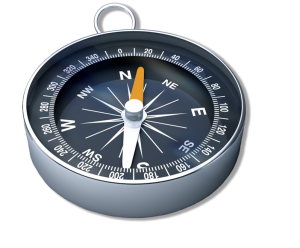Konsulting the Border
Konsult Experiment, beginning December, 2019, Gregory Ulmer and John Craig Freeman (Florida Research Ensemble).
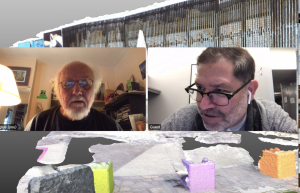
Ulmer and Freeman, Distance Table Work, Konsulting the Border.
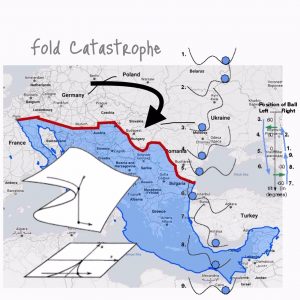
A border is a line: the Big Bend diagrams a fold catastrophe (R. Thom).
Extimacy. This is Lacan’s term to identify the nature of subject identity formation in electracy. Human identity emerges within a field condition (the Unconscious), a psychoanalytic version of Heidegger’s Dasein (being in the world), in which the inside and outside of person are diagrammed using topological figures such as Klein bottle or moebius strip. The import is that “truth” is hidden in plain sight: repression does not erase the subject’s truth but displaces, disguises, distorts it using the tropology of dreamwork, such that it may be recovered, known, reconfigured in therapy (or through practices of art or politics). The theory and practice of psychoanalysis, existential philosophy, and modernist poetics are isomorphic, functioning by means of extimate epiphanies or illuminations: the invisible spiritual affective order “inside” becomes intelligible and accessible through formal operation with and through the material concrete manifest “outside.” In short, the Border outside (US-Mexico border)—configured within konsult theopraxesis—gives insight and knowledge of “the border in me,” and bordering itself as such. Extimacy is how egents gain access to both poles of alienation—totality of global commodity forces and unconscious libidinal drives of the body (corporation and corporeality).
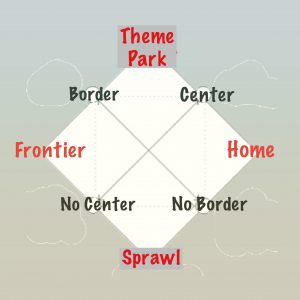
A semiotic square (Greimas) of outlines a border system, indicating a shift from Frontier to Sprawl.
In short, event create extimacy, and extimacy is the ontology required to complete the cognitive map (choragraphy) of electracy, reconnecting the microcosm and macrocosm registers of digital apparatus. The challenge of our project is to design and test konsut, and apply it to choragraphy of the US-Mexico border. The ambition is that the extimate experience of our konsult event educates an engaged public sphere with respect to electracy in general and remediation of border disasters in particular.
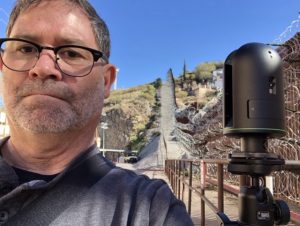
Border Moment, Nogales AZ



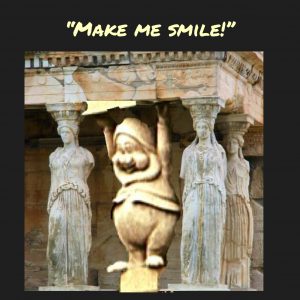
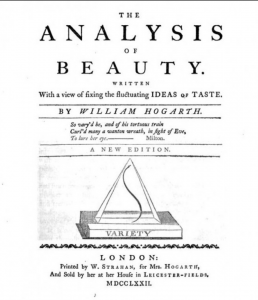 A second affiliation with tradition important to note in this seminar is Lacan’s reference to Hogarth’s curved line of beauty as relevant to the genealogy of his knot topology. This connection makes explicit Lacan’s contribution to the larger question of the gramme, the invention of the plasmatic line in the Paleo apparatus, in continuing service up to the present, now augmented in electracy through animation and digital FX. Sergei Eisenstein cited Disney’s animated film, Steamboat Willie (1928) as a revelation of the new order opened up in media by the plasmatic line. We will have more to say about the ontological properties of this line.
A second affiliation with tradition important to note in this seminar is Lacan’s reference to Hogarth’s curved line of beauty as relevant to the genealogy of his knot topology. This connection makes explicit Lacan’s contribution to the larger question of the gramme, the invention of the plasmatic line in the Paleo apparatus, in continuing service up to the present, now augmented in electracy through animation and digital FX. Sergei Eisenstein cited Disney’s animated film, Steamboat Willie (1928) as a revelation of the new order opened up in media by the plasmatic line. We will have more to say about the ontological properties of this line.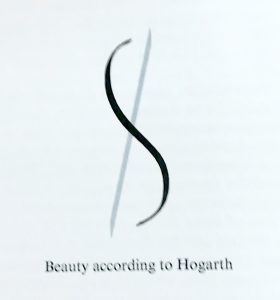
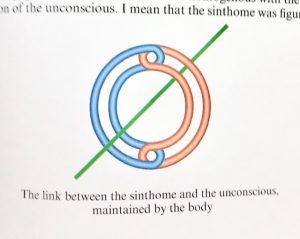
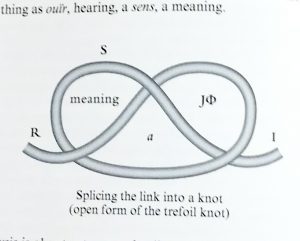
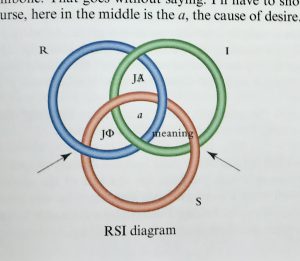
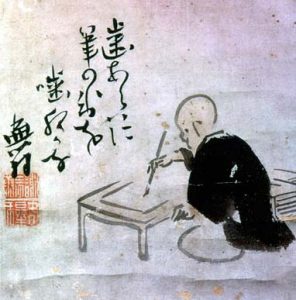 Haiku Reason. Spring Break of 1980 I went to Europe and met Joseph Beuys in Düsseldorf and Jacques Derrida in Paris, protagonists of Applied Grammatology (1985). The other adopted mentor I wanted to meet, Roland Barthes (inspiration for Teletheory, 1989), was fatally injured in an accident just a few days before I arrived in Paris. On the strength of reading Barthes’s Camera Lucida, published late in his career, in which he theorized image logic by analogy with Japanese haiku poetry, I based my introduction to image thinking in Internet Invention on haiku reason (synonymous with reasoneon). What I didn’t know was that at the time of his accident Barthes had just completed a seminar in which the fall semester was devoted entirely to haiku poetry as a foundation for thinking about imaging in general: The Preparation of the Novel, English, translation published 2011. We will return to late Barthes, whose A Lover’s Discourse: Fragments, is a relay for mystory (in Teletheory). Japonisme in any case played a major role in the invention of modernism in France, a symptom of the syncretism underway throughout the colonial period forming a hybrid of Western and Eastern civilizations, with artists creating the cyberpidgin language made necessary by the trade routes opened by the corporation, the new institution of electracy (East India Company, 1600). In this context, Barthes’s example motivated a closer look at Japonisme in particular and Eastern resources in general.
Haiku Reason. Spring Break of 1980 I went to Europe and met Joseph Beuys in Düsseldorf and Jacques Derrida in Paris, protagonists of Applied Grammatology (1985). The other adopted mentor I wanted to meet, Roland Barthes (inspiration for Teletheory, 1989), was fatally injured in an accident just a few days before I arrived in Paris. On the strength of reading Barthes’s Camera Lucida, published late in his career, in which he theorized image logic by analogy with Japanese haiku poetry, I based my introduction to image thinking in Internet Invention on haiku reason (synonymous with reasoneon). What I didn’t know was that at the time of his accident Barthes had just completed a seminar in which the fall semester was devoted entirely to haiku poetry as a foundation for thinking about imaging in general: The Preparation of the Novel, English, translation published 2011. We will return to late Barthes, whose A Lover’s Discourse: Fragments, is a relay for mystory (in Teletheory). Japonisme in any case played a major role in the invention of modernism in France, a symptom of the syncretism underway throughout the colonial period forming a hybrid of Western and Eastern civilizations, with artists creating the cyberpidgin language made necessary by the trade routes opened by the corporation, the new institution of electracy (East India Company, 1600). In this context, Barthes’s example motivated a closer look at Japonisme in particular and Eastern resources in general. Pachinko
Pachinko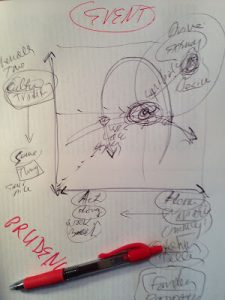 This diagram sketch suggests a way to map the components of the exercise “Allegory of Prudence” onto some conventional dynamics of narrative semiotics:
This diagram sketch suggests a way to map the components of the exercise “Allegory of Prudence” onto some conventional dynamics of narrative semiotics: 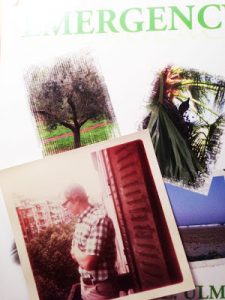 These four codes provide four slots for the allegory: an action and an underlying narrative (fantasy); a feature of the scene (the prop or seme) and its associated mythology (aura). The fifth code is the Symbolic (alluding to Lacan’s Symbolic Order), which is the structuring or “anagogical” code of the social and civilizational context of the scene. This code is reprsented in the diagram by a partial version of one of Lacan’s schemas, showing the temporality of language, and of the unconscious (structured like a language). The Event alluded to in AE happens in this manner, constructing the time image of prudence. An initial satisfaction, experienced in infancy, remains latent and potentially present (flashes up at the moment of its recognizability, Benjamin says), triggered by some chance incident (Proust’s involuntary memory). The Symbolic code synthesizes the other four codes, addressing the paradigmatic axis of selection in terms of binary oppositions (male/female, death/life…), and the syntagmatic axis of combination in terms of primary exchanges in the life world– of language, wealth, and kinship. This circuit of remembrance through senation, this triggering of memory and imagination through the activation of somatic markers (Damasio, Neuroaesthetics), is the aesthetic homology to be correlated with mobile media in smart environments, to develop an electrate konsult.
These four codes provide four slots for the allegory: an action and an underlying narrative (fantasy); a feature of the scene (the prop or seme) and its associated mythology (aura). The fifth code is the Symbolic (alluding to Lacan’s Symbolic Order), which is the structuring or “anagogical” code of the social and civilizational context of the scene. This code is reprsented in the diagram by a partial version of one of Lacan’s schemas, showing the temporality of language, and of the unconscious (structured like a language). The Event alluded to in AE happens in this manner, constructing the time image of prudence. An initial satisfaction, experienced in infancy, remains latent and potentially present (flashes up at the moment of its recognizability, Benjamin says), triggered by some chance incident (Proust’s involuntary memory). The Symbolic code synthesizes the other four codes, addressing the paradigmatic axis of selection in terms of binary oppositions (male/female, death/life…), and the syntagmatic axis of combination in terms of primary exchanges in the life world– of language, wealth, and kinship. This circuit of remembrance through senation, this triggering of memory and imagination through the activation of somatic markers (Damasio, Neuroaesthetics), is the aesthetic homology to be correlated with mobile media in smart environments, to develop an electrate konsult.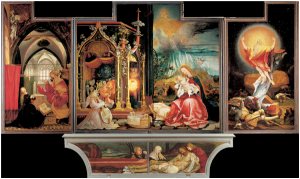 –After Nature. The work assigned in seminar, however, is After Nature. There are three worlds juxtaposed in this case, characterized as a triptych. The structure is thematized in the first section, about the sixteenth-century painter Matthias Grünewald, creator of perhaps the most famous triptych in art, the Isenheim Altarpiece. The second section is on the nineteenth-century botanist George Steller, and his journey into the Arctic with the expedition of Vitus Bering. The final section is an autobiographical prose poem. This section begins with testimony regarding the truth of a wide image, characterized as a memory fossil. “For it is hard to discover the winged vertebrates of prehistory embedded in tablets of slate. But if I see before me th nervature of past life in one image, I always think that this has something to with truth” (Sebald, 83). Then follows the scene of his existential epiphany (primal scene).
–After Nature. The work assigned in seminar, however, is After Nature. There are three worlds juxtaposed in this case, characterized as a triptych. The structure is thematized in the first section, about the sixteenth-century painter Matthias Grünewald, creator of perhaps the most famous triptych in art, the Isenheim Altarpiece. The second section is on the nineteenth-century botanist George Steller, and his journey into the Arctic with the expedition of Vitus Bering. The final section is an autobiographical prose poem. This section begins with testimony regarding the truth of a wide image, characterized as a memory fossil. “For it is hard to discover the winged vertebrates of prehistory embedded in tablets of slate. But if I see before me th nervature of past life in one image, I always think that this has something to with truth” (Sebald, 83). Then follows the scene of his existential epiphany (primal scene).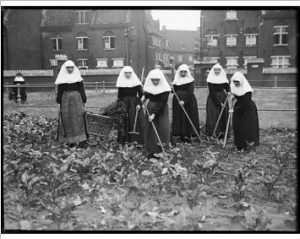 I grew up, despite the dreadful course of events elsewhere, on the northern edge of the Alps, so it seems to me now, without any idea of destruction. But the habit of often falling down in the street and often sitting with bandaged hands by the open window between the potted fuchsias, waiting for the pain to subside and for hours doing nothing but looking out, early on induced me to imagine a silent catastrophe that occurs almost unperceived. What I thought at the time, while gazing down into the herb garden in which the nuns under their white starched hoods moved so slowly between the beds as though a moment ago they had still been caterpillars, this I have never got over. The emblem for me of the scarcely identifiable disaster since that time has been a stunted Tatar with a red headcloth and a white slightly curved feather. In anthropology this figure is often associated with certain forms of self-mutilation and described as that of the adept who ascends a snow-covered mountain and long tarries there, as they say, in tears. (Sebald, After Nature, 89-90).
I grew up, despite the dreadful course of events elsewhere, on the northern edge of the Alps, so it seems to me now, without any idea of destruction. But the habit of often falling down in the street and often sitting with bandaged hands by the open window between the potted fuchsias, waiting for the pain to subside and for hours doing nothing but looking out, early on induced me to imagine a silent catastrophe that occurs almost unperceived. What I thought at the time, while gazing down into the herb garden in which the nuns under their white starched hoods moved so slowly between the beds as though a moment ago they had still been caterpillars, this I have never got over. The emblem for me of the scarcely identifiable disaster since that time has been a stunted Tatar with a red headcloth and a white slightly curved feather. In anthropology this figure is often associated with certain forms of self-mutilation and described as that of the adept who ascends a snow-covered mountain and long tarries there, as they say, in tears. (Sebald, After Nature, 89-90).